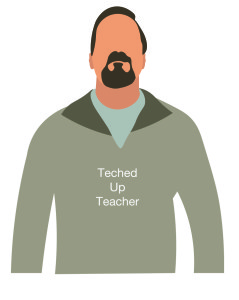Year In Review: Lessons on Gamification

I’ve learned a lot after a year of working with fifth and sixth graders in our blended, gamified makerspace. Our makerspace, called The Innovation Lab, is built on four pillars: Comp Sci, Design & Engineering, Digital Arts, and Entrepreneurship. It also uses game-mechanics to help deliver content and engage students. I started the year with my gamification basics: Epic Meaning, Leaderboards, Achievements, and Item Shop system I’ve been developing for years. Then things changed.

Our Innovation Lab was a whirlwind of making all year. Students were motivated and engaged from start to finish. I learned a ton about designing and running a makerspace, but I also learned more than I thought I would about Gamification:
Lesson learned: Motivated students Don’t Need the “Basic” Gamification Techniques. For most of my career, I’ve taught reluctant learners. I came into the Innovation Lab with that mindset, but my kids were anything but reluctant. So, about halfway through the year, I got rid of the Leaderboards, Achievements, and Item Shop. Students didn’t need them. Our time could be better spent developing the more engaging and empowering aspects of Gamification.

Above, is a graphic from an eBook I’m working on about Gamification. I’m still playing with the structure and wording, but the graphic captures the different levels of Gamification and the way students interact with it. There is nothing wrong with using the more basic aspects of Gamification to motivate learners, but if they come motivated you can turn that motivation into something more. Where did I spend my time?
At the same time I removed the Gamification basics, I introduced our take on the school store: Gizmos. I built Gizmos as an online store for students to sell their Innovation Lab creations. For fun, when it was time for students to create their stores, I roleplayed with them. I would call them to our “office,” and have them pitch me on their business and tell me why they were interested in partnering with Gizmos. Students made up store names, sold me on a business proposal, and made up reasons they wanted to partner with Gizmos. I told them Gizmos was excited to have them and ended our business meeting with firm handshakes. It was fun, but the more I thought about it the more I liked the idea of creating a yearlong narrative around Gizmos.
Lesson (re)Learned: Not All Gamification is Created Equally. Some Gamification techniques are great for motivation, some for engagement, and some for empowerment. I used to run yearlong Alternate Reality Games (ARG) in my English class. Student learning was driven forward by a transmedia, sci-fi narrative that sucked students into a story where they were the main characters and they had to act before the year was over. Most students loved it, and it was some of the most fun I’ve had teaching. I’m wondering if Gizmos is an opportunity to bring a narrative/ARG to the Innovation Lab? I’m toying with the idea next year to change over from Quests, XP Points, and other Epic Meaning terminology and replace it with a narrative like – Innovation Lab is a startup and Gizmos is our student-run storefront. The narrative would turn students into employees or, better yet, stockholders. Portfolios could become Monthly Reviews or TPS Reports. Announcements could become memos. Conferences could become Performance Reviews. Students could pick roles like Accountants and keep “the books” for Gizmos along with our Business Administrator, Techs who make sure our technology is working, Advertisers who promote Gizmos to the community, or PR team who gives updates to the Superintendent and the Board of Ed.. How would a narrative change the class? Would the narrative be fun for them (I’ve just today started asking them)? Do we dare go further?
Lesson I Want To Learn: Can Authentic Learning be too Authentic? When we first introduced Gizmos, students thought they were going to make real money for the creations they sold in Gizmos. I rained on their parade and said the real money we made would go back into the program as we try to become the first ever self-funded makerspace. Instead of money, students would earn commission on the sale and use it to buy something off Gizmos. I lost some, but most warmed up to the idea. I started to wonder: what if we did pay the kids? What’s more authentic than running a real store and getting paid real money for the work you put into it? I think being part of a “fake” business would be fun and engaging, but ultimately it’s just that, fake. Could we make Gizmos a real business? Should we make Gizmos a real business? Maybe instead of paying them, as stockholders in Gizmos (I’m totally making stock certificates next year!), what if they got to vote on how we spent the money at a stockholders meeting? Do we buy a new toy for the Innovation Lab? Donate the money to a cause? Fund another project elsewhere in the school?
Tools and ideas to transform education. Sign up below.
I’m in love with an idea that hasn’t been fully formed!
Lesson Learned: Mandatory Fun Is Still Not Fun! One thing I want to avoid with Gizmos and the Innovation Lab as a whole is making things mandatory. Of course some things are mandatory, like portfolios, evidence of learning, and reflections, but in our Innovation Lab students have a choice in what they do. If they want to spend their time making podcasts and never try coding, that’s up to them. If they don’t want to sell anything in Gizmos, they don’t have to. While we do try to “Yes, and…” them to push them out of their comfort zone, giving students the same voice and choice a good game tried to deliver continues to be important in making the Innovation Lab engaging.
And that’s what it’s all about for me. I want to provide the most engaging, empowering, fun, authentic learning opportunities I can for our students. By graduation, our kids’ worlds are going to look a lot different than they do now. I think by exposing them to as many different types of technologies, experiences, learning styles, and skills as we can will only make them more successful in the future.
Lessons on Game-Based Learning and running a makerspace coming soon.
Until Next Time,
GLHF
cross-posted at Teched Up Teacher
Chris Aviles presents on education topics including gamification, technology integration, BYOD, blended learning, and the flipped classroom. Read more at Teched Up Teacher.
Chris Aviles is a STEM teacher, edtech specialist, and president of Garden State Esports. He is also a regular contributor to Tech & Learning.
